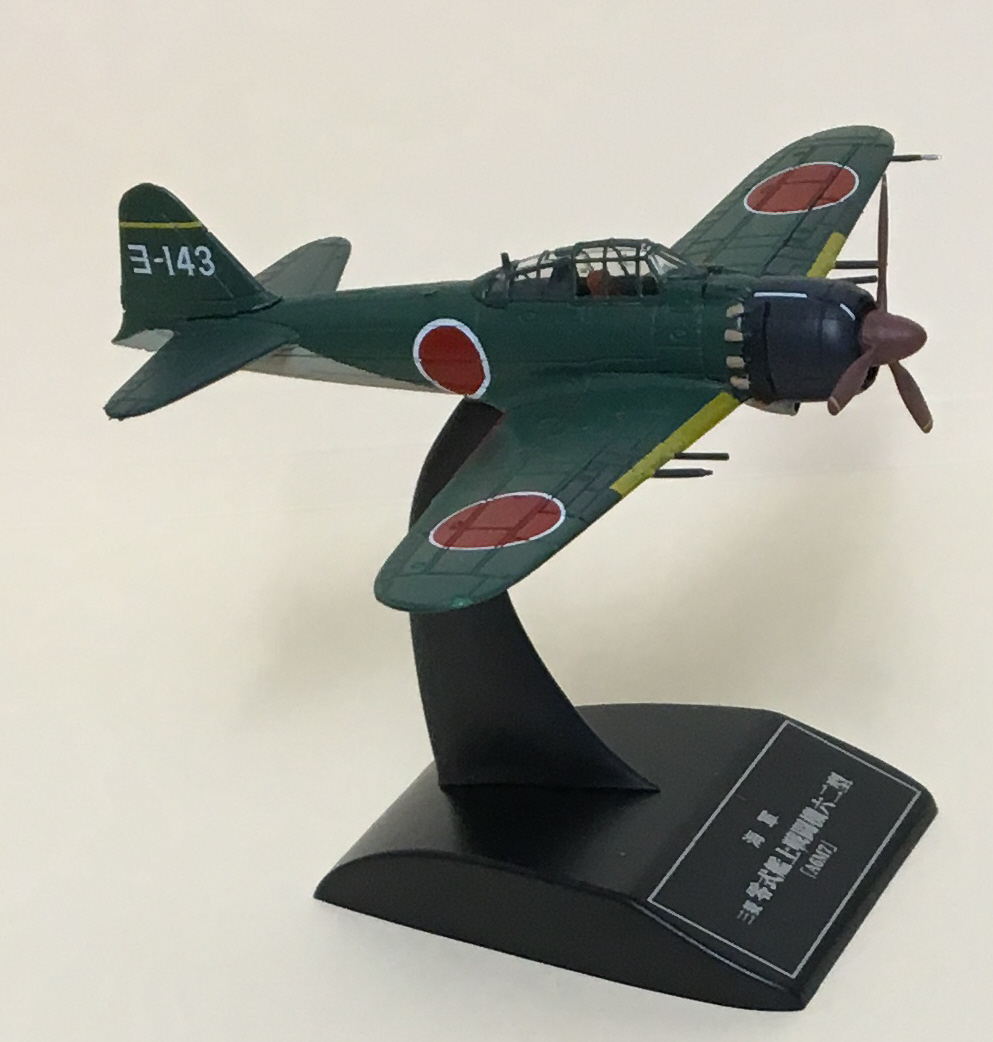FACTOIDS & TRIVIA
Introduced in May 1945, the A6M7 Model 62 (allied code
name “Zeke”) was the final iteration of the venerable Zero. It was
basically the same as the A6M5c, but with self-sealing fuel tanks in
the wings, a more powerful engine, and reinforced horizontal
stabilizers. However, the role of the A6M7 was that of a fighter-bomber
because an attack aircraft was needed that could based on small
carriers. By 1945, the Imperial Japanese Navy had lost all of their
large
carriers and, unfortunately for the IJN, large powerful dive bombers
such as the Yokosuka D4Y "Judy" could
not operate from small carriers. The A6M7 could carry a single 1,100 lb
bomb or a 550 lb bomb and two external drop tanks, but it was too
little, too late. By
the end of the war, over 10,900 Zero aircraft (all variants) were built! Here's
a video
clip
of me flying the A6M7 Model 63 against a P-39D Airacobra.
MITSUBISHI
A6M7 Model 62 "Zeke"

Class: Fighter-Bomber
Crew: 1
Engine: Nakajima
NK1E Sakae-31 14-cylinder twin-row radial (1,210 hp)
Max Speed: 337
mph at 19,685 ft
Climb Rate: 2,6285 ft/min
Service Ceiling:
36,255 ft
Range:
1314 miles
Armament: 1 x .303 inch machine
gun
(fuselage mount)
2 x
.50 inch machine gun (wing mount)
2 x
20 mm cannon (wing mount)
1 x 550 lb or 1 x 1,100 lb bomb
Model Scale:
1:87
Back
to the Japanese
Combat Aircraft of WWII
Menu

